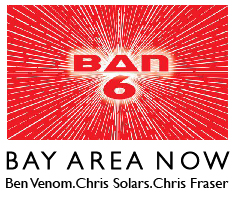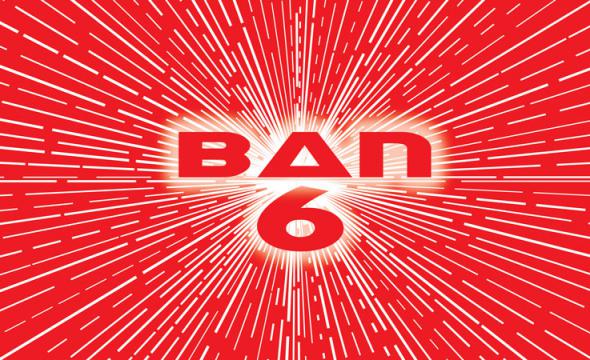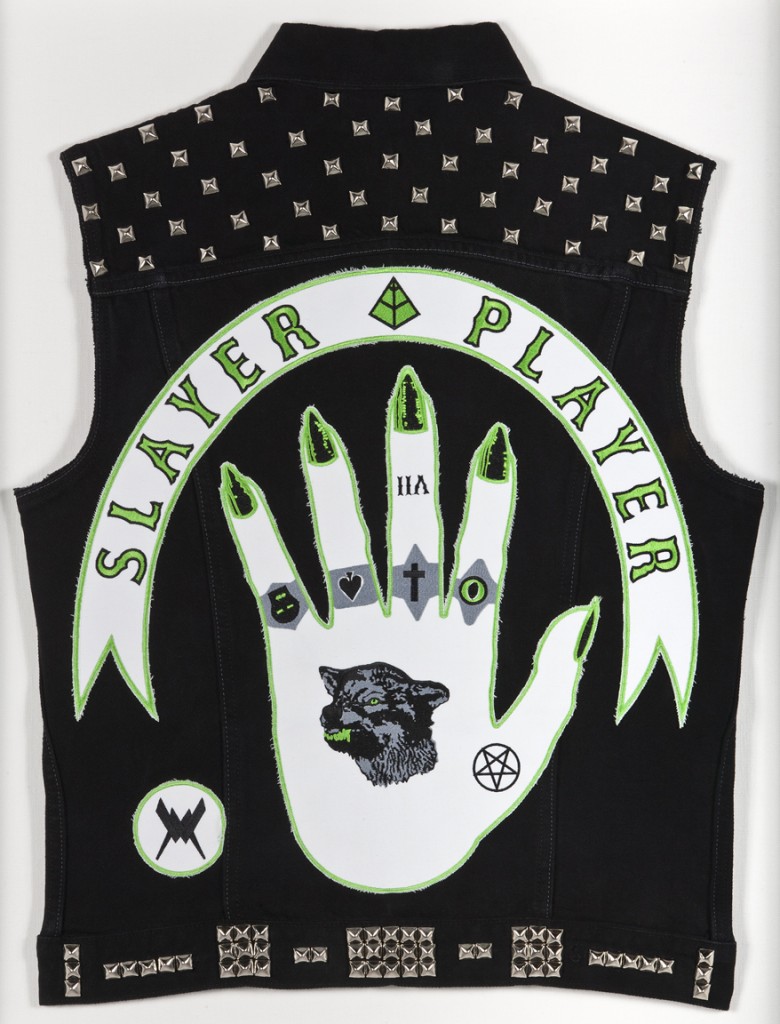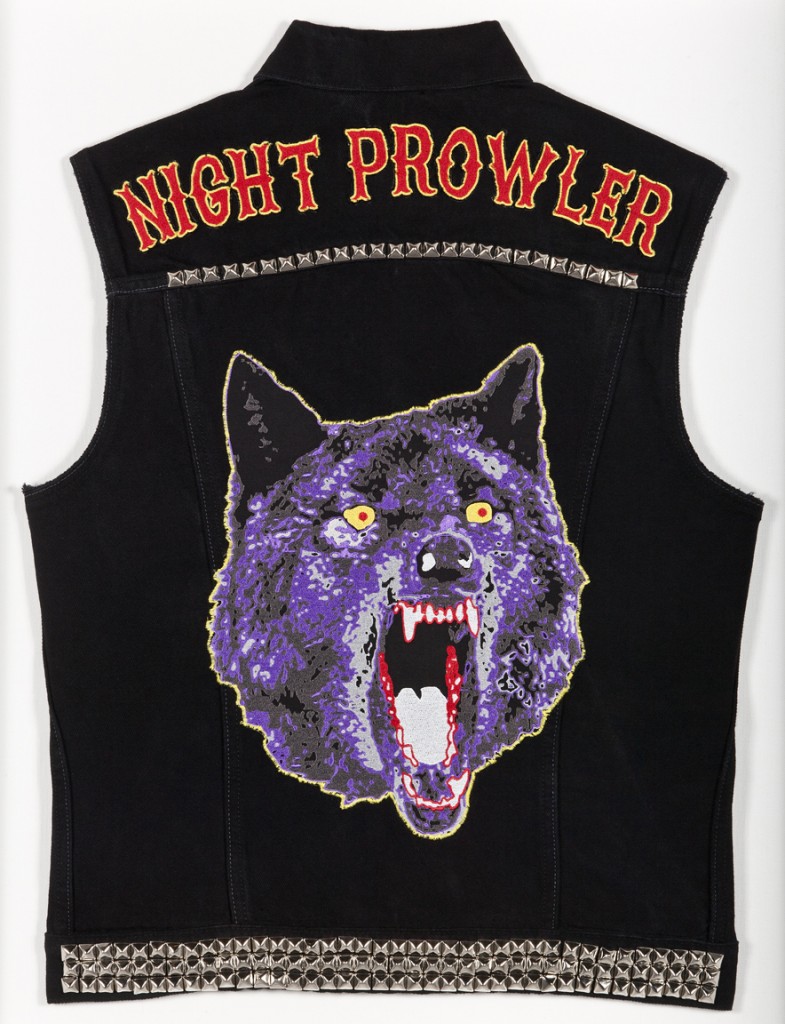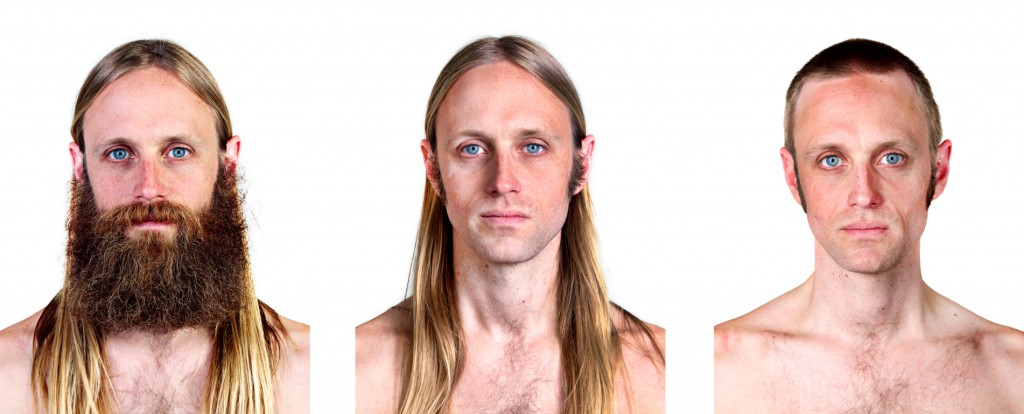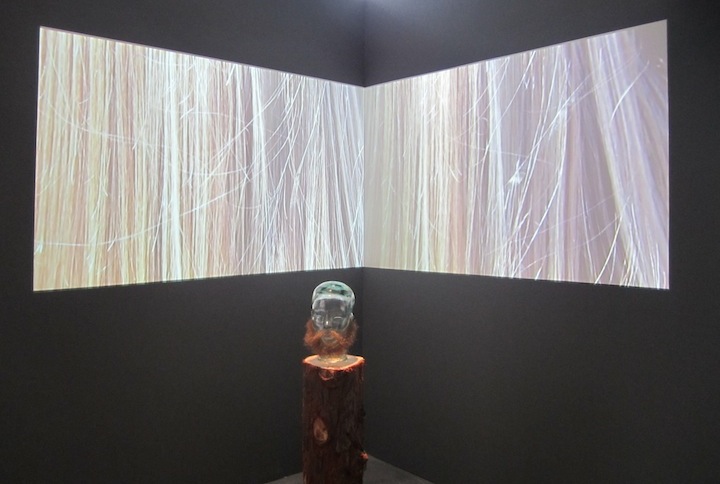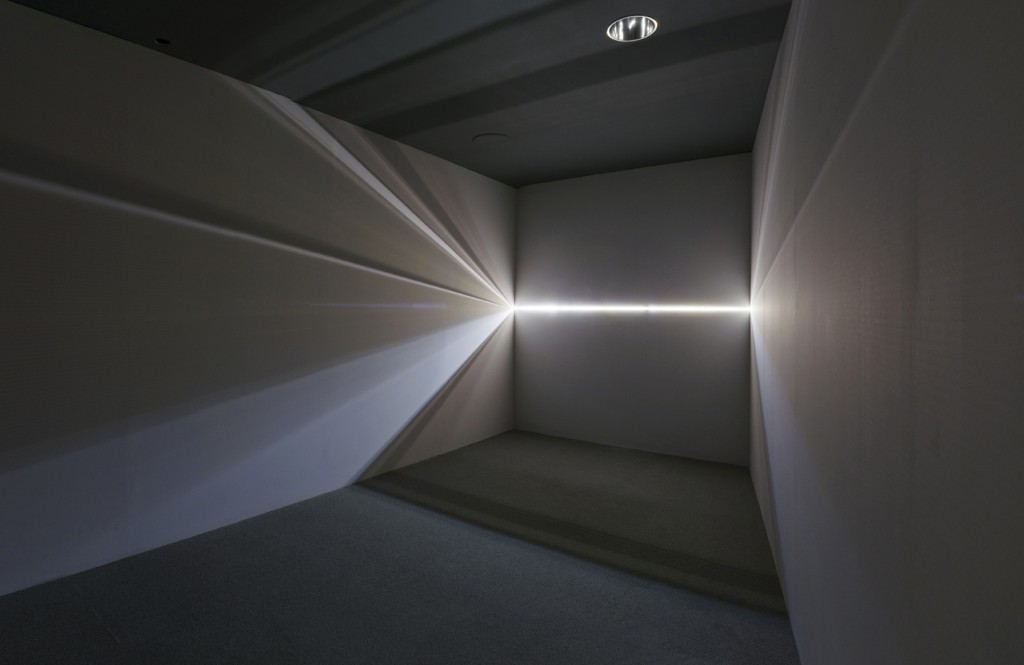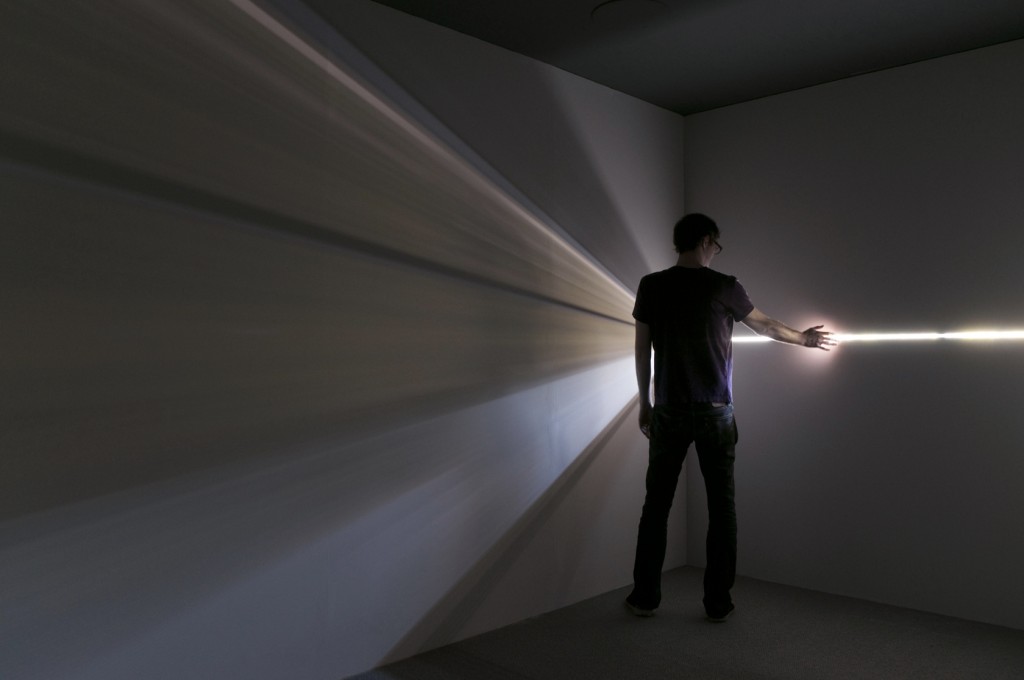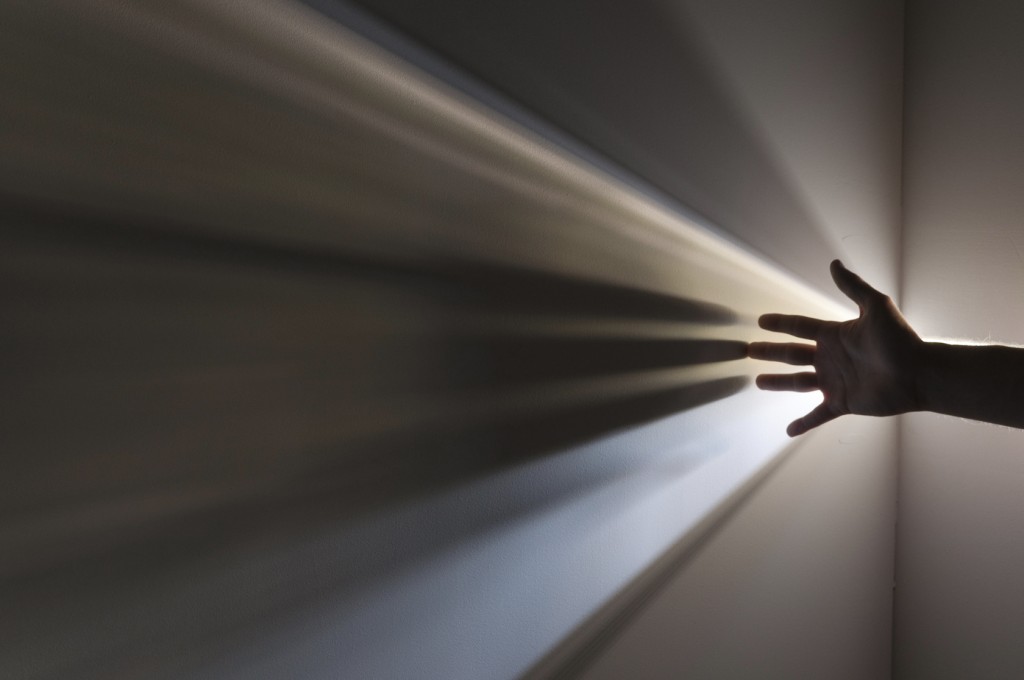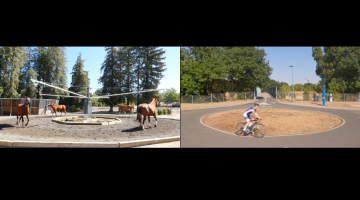Curatorial Assistant of YBCA Thien Lam sat down with a few Bay Area Now 6 artists and asked them a few questions about their experience with the major Exhibition as well as about thier individual practice.
Ben Venom
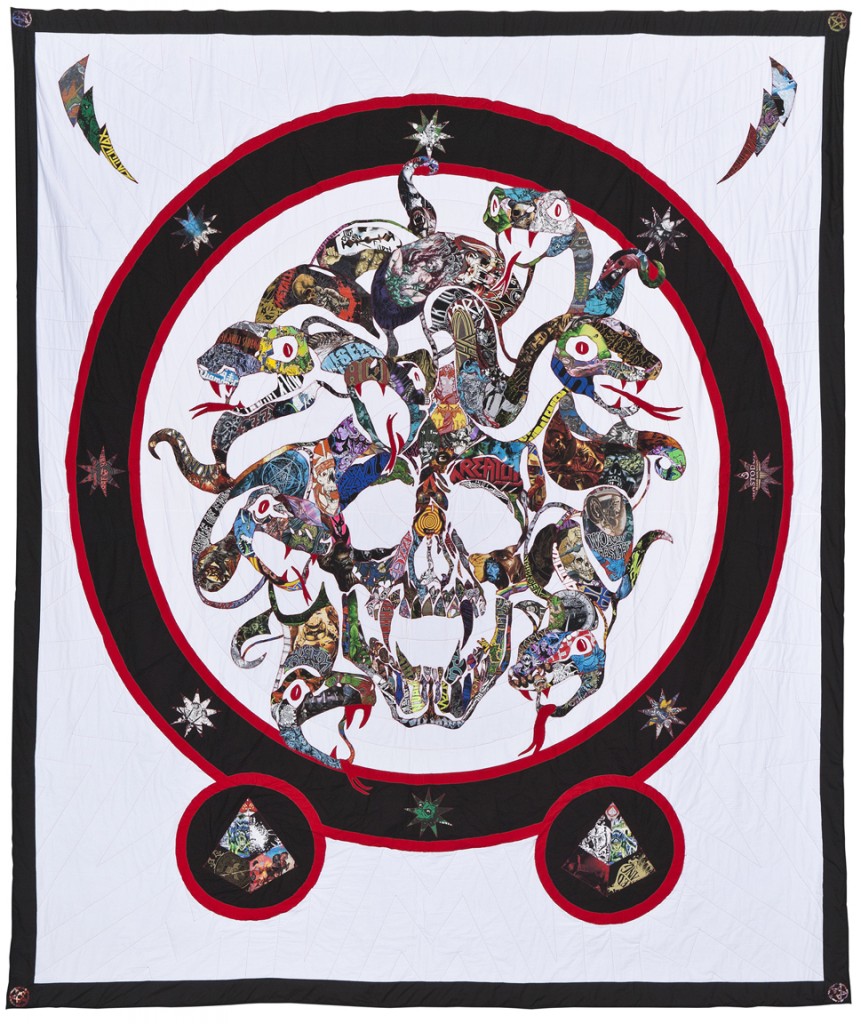
See You on the Other Side Hand-made Quilt, Heavy Metal T-Shirts, Fabric, Batting, Thread 155” x 175” 2011
What are your views on BANs past and how would you characterize any similarities with or differences from BAN6?
Having attended Bay Area Now 5 I can see some similarities to BAN 6 with a very cross-disciplinary approach to the exhibition. Installation, sculpture, painting, and mixed media works are all represented in both BAN 5 and BAN 6. However, for BAN 6 there was a conscious effort to expand pass the gallery walls with various lectures in the months leading up to the visual exhibition reception. I think this was an interesting approach to discuss topics such as green technology, new economic models, and social networking.
Prior to the visual arts exhibition, artists attended a monthly series of conversations relating to such hot topic issues in the Bay Area as food, technology, and the environment. Did these conversations inform your work at all or your process leading up to the exhibition?
I attended at least 4 of these conversations and was interested in the material presented but never felt a strong connection to the work I was creating for the exhibition. Immediately after I was asked to participate in BAN 6 I began to formulate my ideas and was already heading down a defined path. However, I am still digesting some of the information from the lectures that may inform future work.
What is your interest in new forms of media and mixing genres: sculpture, video, performance, etc. Where does this interest in extending beyond conventional borders of straight photography, painting, etc. come from?
Today people have to be able to multi-task on many different levels and quickly adapt to ever changing environment. Artists are merely responding to this cultural shift of rapid advancement and mixing new technology with analog. For me…the idea will dictate the medium of choice. I have always thought of myself as an artist and not a printmaker, textile, or painter.
You use a lot of found objects in your work, a recurring theme throughout art history, from Dada to Arte Povera. Is this an insertion of everyday life into art, a statement on capitalism and consumption or something else?
Consumption. The fact that Great Pacific Garbage Patch exists is evidence enough that we must address our high levels of consumption and find a way to either recycle or compost our waste in a more efficient manner. My quilts incorporate used Heavy Metal t-shirts that would normally be thrown away. Once the shirts cannot function as clothing they have a new life…warmth from a quilt. The idea being…when HELL freezes over, Satan will need a warm blanket to sleep with!
Aside from heavy metal’s interest in paganism, is there a reason for the references to the occult and mythology in your quilts?
I was raised in a very religious family and have been exposed to the beliefs and lessons of modern religion. The occult and mythology offer some different perspectives on the world from what I was taught at an early age. Heavy Metal and Black Metal bands typically draw inspiration from the occult and Norse mythology. For example, Iron Maiden’s album 7th Son of a 7th Son references the belief that this individual will posses special abilities and has a direct link to Satan. Folklore has always been a strong point of interest Heavy Metal lyrics. My work simply takes these ideas and translates them into a conceptual visual form.
Chris Sollars
What are your views on BANs past and how would you characterize any similarities with or differences from BAN6?
Some previous installations of BAN have been crowded and sometimes try to fit artists’ work more rigorously into categories /themes. BAN6 allows gives more breathing room / space to the artist and returns to a more Bay Area survey exhibition.
Prior to the visual arts exhibition, artists attended a monthly series of conversations relating to such hot topic issues in the Bay Area as food, technology, and the environment. Did these conversations inform your work at all or your process leading up to the exhibition?
The best moments of these conversations were the conversations when the artists ourselves were discussing and tackling these topics.
All the artists have displayed an interest in new forms of media and mixing genres: sculpture, video, performance, etc. Where does this interest in extending beyond conventional borders of straight photography, painting, etc. come from?
There are also very traditional modes of art production in the exhibition: photography, collage, sculpture, and painting. I’d say that any “new forms of media” in BAN6 are recombination’s of previously used approaches to making art. However the artists might be tackling more recent events or current subjects of 2011 and recombining previously used technologies/medias to come to different outcomes. Bay Area Art is rooted in the tradition of multi-media artists such as Bruce Conner, counter culture approaches of the San Francisco Diggers and music light shows, and the Bay Area Conceptual Artists of the 60’s and 70’s. Contemporary Bay Area artists may or may not be interested or inspired from these trajectories.
You, Mauricio, and Ben use a lot of found objects in their work, a recurring theme throughout art history, from Dada to Arte Povera. And even Chris Fraser works with light, a non-material. Is this an insertion of everyday life into art, a statement on capitalism and consumption or something else?
Also Brion, Allison, Suzanne, Amy, and Tony, have all used “found” material in the construction of their work for BAN 6. You can find objects anywhere but are the materials found in research, a store, the woods, the street. Found is a tricky word. I’m trying, to work more and more with appropriated or used material directly next to me, in front of me, or on me, which I alter or affect. The cost of living in the Bay Area is extraordinarily high, which affects artists material, modes or methods of production, but not always subject matter. So, I think about keeping the costs of production low, the waste of material or by products of art production low, and now even which art to produce with my limited resources and will it become trash in the future. There are a lot of artists and producers of images adding to an overabundance of visual clutter not thinking about the future and I don’t mean all these great works will be in their retrospective. Which leads me to Time. Our consuming Culture is stuck on a present tense mode of production and consumption and not thinking future tense. Artists also get stuck in present tense of time. In “Hair – When I’m 64” 2011-2040 I wanted to get out of the present tense of time and think longterm about a work. Hair is a wig of my34 year old hair to be worn on my 64 year old head. A piece that won’t truly be done till 3 decades in the future and could exist with a part of my own body after I’m dead and gone. Amy Balkin is looking into the future even further with her project This is the Public Domain.
How does humor inform your work and how influenced are you by the playfulness and irreverence of Fluxus?
Humor and art yes. My ideas are often exaggerations, juxtapositions, and unexpected situations that end up being absurd, ridiculous and sometimes funny. I look to Duchamp, Hi RED Center Japan scrubbing the street, Bruce Nauman, Will Wegman, Miranda July, SF. Diggers, Buster Keaton, Monty Python, early SNL skits, and many more. All of which give me creative freedom to combine my visual/formal/conceptual ideas with my sense of humor. It can be hard to get a laugh. Harder to have variation within the laughter. More difficult to have someone go deeper than the joke or laughter and to have it resonate with them days later. I like complicate matters with situations that will have some laugh while others cringe. I liked seeing this while watching some folks or hearing second hand of people watching me shave with an axe.
p.s. – Where are the women from BAN 6 for these interviews?
p.s.s – I’ve seen you a lot lately did you see me.
Title: Invisible in Plain Site: I will become visible when you are ready to see me again.
Chris Fraser
What are your views on BANs past and how would you characterize any similarities with or differences from BAN6?
I did not see any of the previous incarnations of the show.
Prior to the visual arts exhibition, artists attended a monthly series of conversations relating to such hot topic issues in the Bay Area as food, technology, and the environment. Did these conversations inform your work at all or your process leading up to the exhibition?
I can imagine a series of conversations with the potential of informing my practice, but these specific talks were outside my current concerns. However, they did provide a nice opportunity to get to know the other artists.
All the artists display an interest in new forms of media and mixing genres: sculpture, video, performance, etc. Where does this interest in extending beyond conventional borders of straight photography, painting, etc. come from?
My concerns are not bound by a specific medium. I search for ways of talking about our interactions with light. Wanting to put the viewer in direct contact with phenomena, I often turn to installation. But I turn to performance, video, and photography when they prove more direct.
You work with light, a non-material. Is this an insertion of everyday life into art, a statement on capitalism and consumption or something else?
The spaces I make never stray far from specific observations. I may, for example, find myself attracted to the light entering through the crack in a door. It carries with it the patterns and colors of the things outside. Somebody may walk past, causing the projection to shiver. Perhaps a tree moves with the breeze. I imagine ways of idealizing these situations, placing them at human scale, minimizing distractions. But any art to be found is not isolated to the resulting installation. In many ways, these spaces point back to the world. They present an opportunity for finding similar beauty in our homes, at work, in transit.
As is often the case with site-specific installations and ephemeral materials, the documentation outlasts or is a stand-in for the work itself. Have you ever thought about displaying the photographs of your light installations as self-sufficient artworks? Why or why not?
My relationship to photography is complicated. While the installations borrow greatly from the history of photography, their ephemeral nature is what I prize most. Each creates a unique vantage point from which to observe the immediate environment. Motion is amplified. The passing of the day becomes rapid. Changes in the season become palpable.
I make and show photographs of the installations. In many ways, they resemble the spaces. But they remain limited reports of a specific time, from a specific place.
